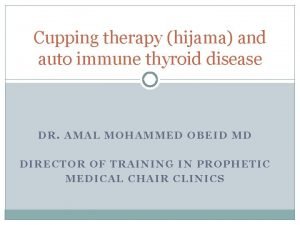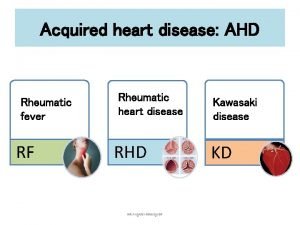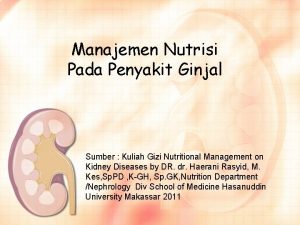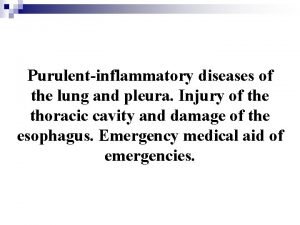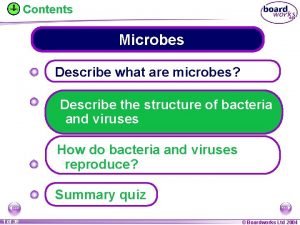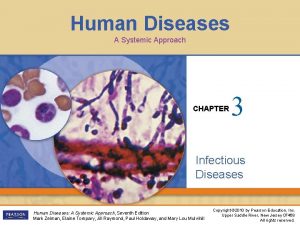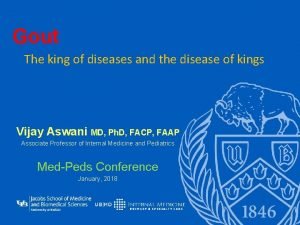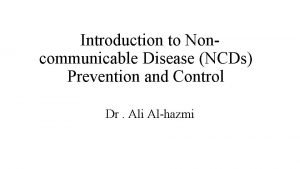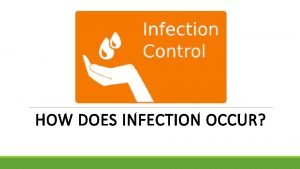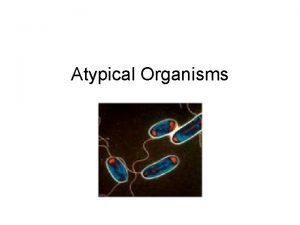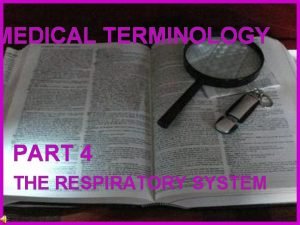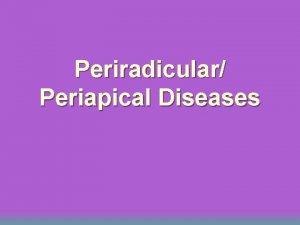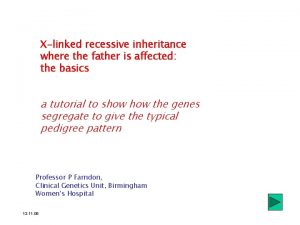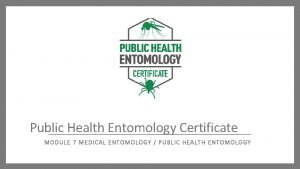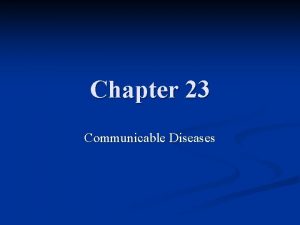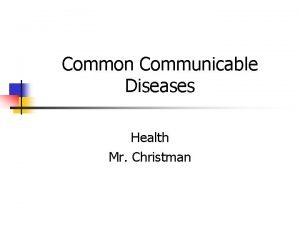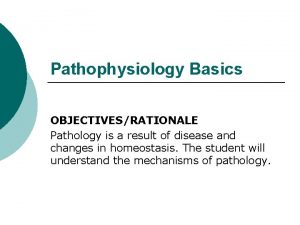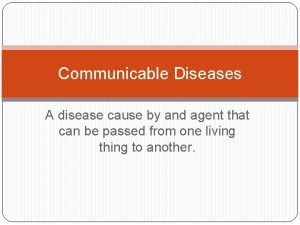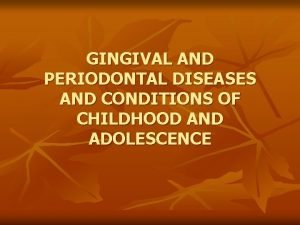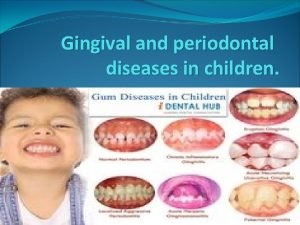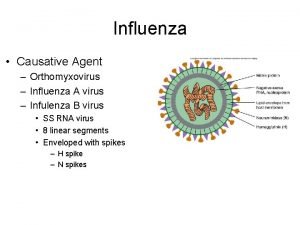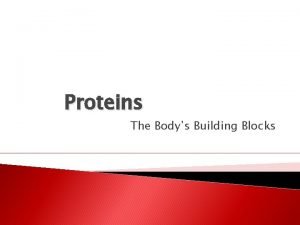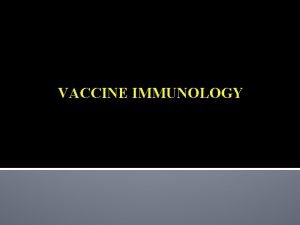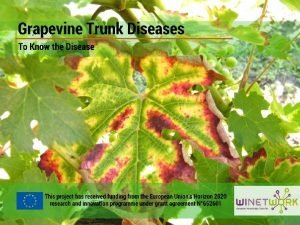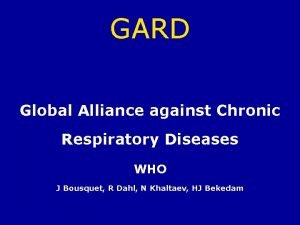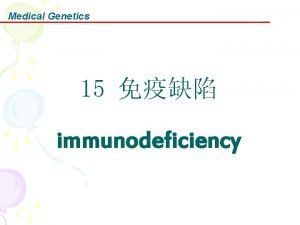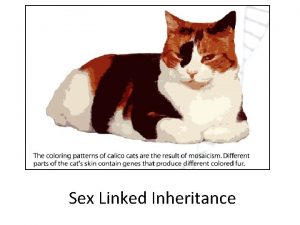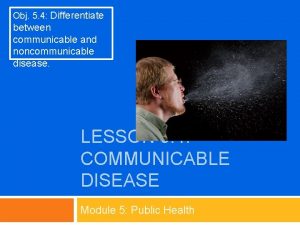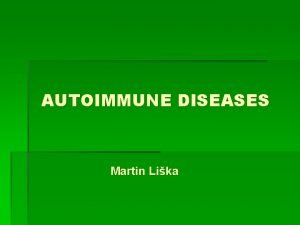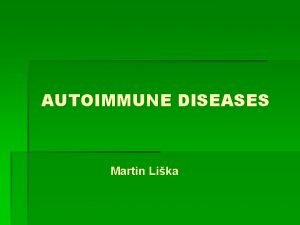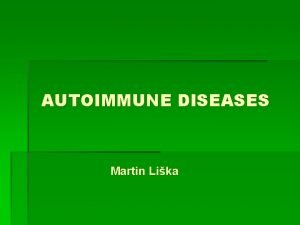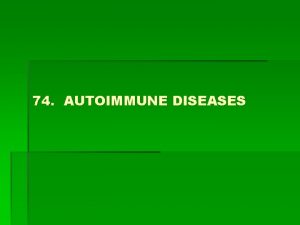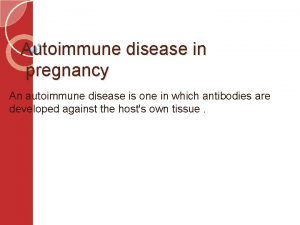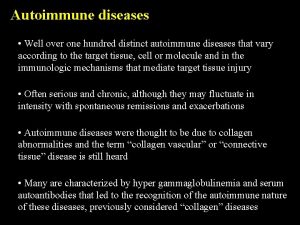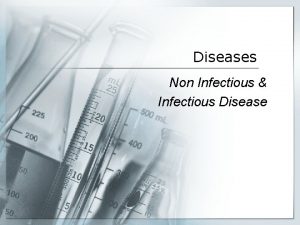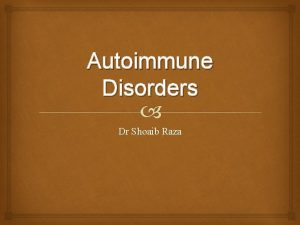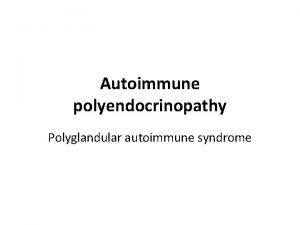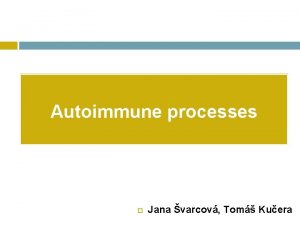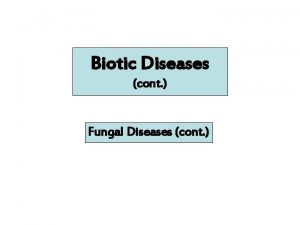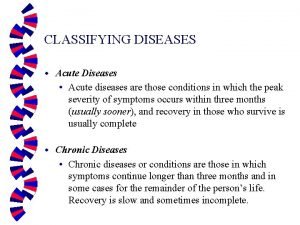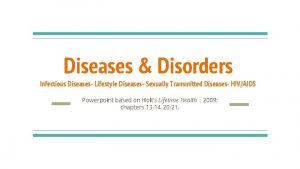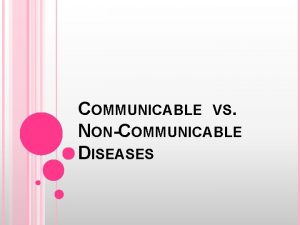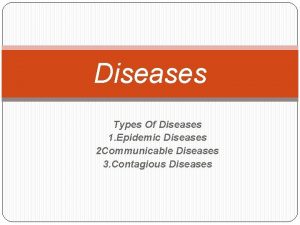74 AUTOIMMUNE DISEASES Autoimmune disease Results from a





































































- Slides: 69

74. AUTOIMMUNE DISEASES

Autoimmune disease § Results from a failure of self-tolerance § Immunological tolerance is specific unresponsiveness to an antigen § All individuals are tolerant of their own (self) antigens

Central and peripheral tolerance § Central tolerance is induced by the death of or other changes in immature lymphocytes that encounter antigens in the generative lymphoid organs § Peripheral tolerance results from the recognition of antigens by mature lymphocytes in peripheral tissues

Central tolerance in T cells § Central tolerance of T cells is the result of highaffinity recognition of antigens in the thymus § Some of these self-reactive T cells die (negative selection), thus eliminating the potentially most dangerous T cells, which express high-affinity receptors for self antigens. § Other Tcells of the CD 4+ lineage develop into regulatory T cell that supress self reactivity in the periphery

Peripheral tolerance in T cells § Peripheral tolerance in T cells is induced by multiple mechanisms § Anergy results from the recognition of antigens without innate immunity and costimulators § The mechanisms of anergy include a block in TCR signaling and engagement of inhibitory receptors § Self reactive regulatory T cells supress potentially pathogenic T cell § Deletion may occure when T cell encounter self antigens

Central tolerance in B cells § central tolerance in B lymphocytes occurs when immature cells recognize self antigens in the bone marrow – some of the cells change their receptors and others die by apoptosis (negative selection)

Peripheral tolerance in B cells § Is induced when mature B cells recognize self antigens without T cell help - this results in anergy and death of the B cells

Autoimmunity § is defined as an immune respons against self antigens § The principial factors in the development of autoimmunity are the inheritance of susceptibility genes and environmental triggers, such as infections § Most autoimmune diseases are polygenic and are asssociated wih multiple gene loci, the most important of which are the MHC genes § Infections may activate self-reactive lymphocytes, thereby triggering the development of autoimmune diseases

AUTOIMMUNE PATOLOGICAL RESPONSE- ETIOLOGY § disorders are characterized by chronicity and usually are irreversible § incidence: 5%-7% of population, higher frequencies in women, increases with age § factors contribute to autoimmunity: - internal (HLA association, polymorfism in genes for cytokines, defect in genes regulating apoptosis, polymorphism in genes for TCR a H immunoglobulin chains, association with immunodeficiencies, hormonal factors) - external (infection, stress by activation of neuroendocrine‘s line and hormonal disbalance, drug and ionization through modification of autoantigens)

Type II hypersensitivity reaction § Ab against cell and tissue antigens may cause tissue injury and disease § autoantibodies characterized by a high afinity to antigens, present in a high level in serum, predominantly in the Ig. G class § autoantibodies against intracelular proteins and nuclear acid, cytoplasmatic molecules participating in protein synthesis and expression and regulation of genes § Ig. M and Ig. G Ab promote the phagocytosis of cells which they bind, induce inflamation by complement – and Fc receptor- mediated leukocyte recruitment , and may interfere with the functions of cells by binding to essential molecules and receptors. § Graves‘ disease, Pernicious anemia, Myastenia gravis, Acute rheumatic fever, Goodpasture‘s syndrome, Pemphigus vulgaris, Autoimmune hemolytic anemia or trombocytopenic purpura

Type III hypersensitivity reaction § Ab may bind to circulating antigens to form immune complexes, which deposit in vessels and cause tissue injury. § Injury is due mainly to leukocyte recruitment and inflammation. § Systemic lupus erythematosus, Polyarteritis nodosa, Poststreptococcal glomerulonephritis

Type IV hypersensitivity reaction § T cell- mediated diseases are caused by Th 1 -mediated delayed-type hypersensitivity reactions or Th 17 mediated inflammatory reactions, or by killing of host cells by CD 8+ CTLs (cytotoxic lymphocytes). § Diabetes mellitus (insulin-dependent), Rheumatoid arthritis, Multiple sclerosis, Inflammatory bowel disease

CLINICAL CATEGORIES § systemic - affect many organs and tissue § organ localised - affect predominantly one organ accompained by affection of other organs (nonspecific bowel diseases, celiatic disease, AI hepatitis, pulmonary fibrosis) § organ specific - affect one organ or group of organs connected with development or function

75. EXAMPLES OF SYSTEMIC AUTOIMMUNE DISEASES § examples § autoantibodies

SYSTEMIC AUTOIMMUNE DISEASES § § § § § Systemic lupus erythematosus Rheumathoid arthritis Sjögren‘s syndrome Dermatopolymyositis Systemic sclerosis Mixed connective tissue disease Antiphospholipid syndrome Vasculitis Sarcoidosis

SYSTEMIC LUPUS ERYTHEMATOSUS § chronic, inflammatory, multiorgan disorder § predominantly affects young women § autoantibodies react with nuclear material and attack cell function, immune complexes with ds. DNA deposit in the tissue § general symptoms: include malaise, fever, weight loss § multiple tissue are involved including the skin, mucosa, kidney, joints, brain and cardiovascular system § characteristic features: butterfly rash, renal involvement, CNS manifestation, pulmonary fibrosis

DIAGNOSTIC TESTS § a elevated ESR (erythrocyte sedimentation rate), low CRP, trombocytopenia, leukopenia, hemolytic anemia, depresed levels of complement (C 4, C 3), elevated serum gamma globulin levels, immune complexes in serum

AUTOANTIBODIES § Autoantibodies: ANA, ds. DNA (doublestranged), ENA (SS-A/Ro, SS-A/La), Sm, against histones, phospholipids

RHEUMATOID ARTHRITIS § chronic, inflammatory joint disease with systemic involvement § predominantly affects women § characterized by an inflammatory joint lesion in the synovial membrane, destruction of the cartilage and bone, results in the joint deformation § clinical features: arthritis, fever, fatigue, weakness, weight loss § systemic features: vasculitis, pericarditis, uveitis, nodules under skin, intersticial pulmonary fibrosis § diagnostic tests: elevated C- reactive protein and ESR, elevated serum gammaglobulin levels - autoantibodies against Ig. G = rheumatoid factor (RF), a-CCP (cyclic citrulline peptid), ANA - X-rays of hands and legs- show a periarticular porosis, marginal erosion

Rtg: symmetrical destruction of proximal joints, erosion of carpal bones, distal radioulnar joints

SJÖGREN‘S SYNDROME § chronic inflammatory disease that affects the exocrine glands § the primary targetsare the lacrimal and salivary gland duct epithelium § general features: malaise, weakness, fever § primary syndrome - features: dry eyes and dry mouth, swollen salivary glands, dryness of the nose, larynx, bronchi and vaginal mucosa, involvement kidney, central and periferal nervous system, artritis § secondary syndrome – is associated with others AI diseases (SLE, RA, sclerodermia, polymyositis, primary biliary cirhosis, AI thyroiditis) § autoantibodies against ENA (SS-A, SS-B), § ANA, RF § The Schirmer test - measures the production of tears

Systemic sclerosis § sclerosis in the skin or other organs § Diffuse scleroderma (progressive systemic sclerosis) is the most severe form - it has a rapid onset, involves more widespread skin hardening, will generally cause much internal organ damage (specifically the lungs and gastrointestinal tract § The limited form is much milder § The scleroderma may be limited to the fingers known as sclerodactyly. § The limited form is often referred to as CREST syndrome "CREST" is an acronym for the five main features: Calcinosis, Raynaud's syndrome, Esophageal dysmotility, Sclerodactyy, Telangiectasia

Immunological findings § ANA, ENA - anti-Scl-70 (fluorescence of nucleolus), anti-centromers

Mixed connective tissue disease § combines features of polymyositis, systemic lupus erythematosus, scleroderma, and dermatomyositis, and is thus considered an overlap syndrome § Causes : joint pain/swelling, malaise, Raynaud phenomenon, muscle inflammation and sclerodactyly (thickening of the skin of the pads of the fingers) § Distinguishing laboratory characteristics: a positive, speckled anti-nuclear antibody (ANA) and an anti-U 1 -RNP antibody (ENA)

Dermatopolymyositis • a connective-tissue disease related to polymyositis (PM) that is characterized by inflammation of the muscles and the skin. Gottron's sign is an Heliotrope rash is a violaceous erythematous, scaly eruption on the upper eyelids, occurring in symmetric fashion often with swelling over the MCP and interphalangeal joints

Dermatopolymyositis § Elevated creatine phosphokinase (CPK) § muscle biopsy (a mixed B- and T-cell perivascular inflammatory infiltrate, perifascicular muscle fiber atrophy) § EMG (electromyogram) § autoantibodies - ENA (Jo-1)

Antiphospholipid syndrome § autoimmune disease characterized by vein and arterial thrombosis, repeated abortions § accompanied by anti-phospholipid autoantibodies (APA) and antibodies against β 2 -glykoprotein I

Vasculitis § characterized by inflammatory destruction of the bloodstream leads into thrombosis and aneurysma § proliferation of the intimal part of blood-vessel wall and fibrinoid necrosis § affect mostly lung, kidneys, skin § diagnostic tests: elevated ESR, CRP, leukocytosis, biopsy of affected organnecrosis, granulomas, angiography

Vasculitis § p- ANCA (myeloperoxidase) positivity (Polyarteritis nodosa, Churg- Strauss, Microscopic polyartheritis nodosa, Good- Pasture‘s syndrome, Kawasaki syndrome) § c- ANCA (serin. proteinase) positivity (Wegener granulomatosis, Churg- Strauss syndrome)

Classification § Large vessel vasculitis (Takayasu arteritis, Giant cell (temporal) arteritis) § Medium vessel vasculitis (Polyarteritis nodosa, Wegener's granulomatosis, Kawasaki disease) § Small vessel vasculitis (Churg-Strauss arteritis, Microscopic polyarteritis, Henoch. Schonlein purpura) § Complaints include fatigue, weakness, fever, arthralgias, abdominal pain, hypertension, renal insufficiency, and neurologic dysfunction

• Giant cell (temporal) arteritis • Temporal artery tenderness or decreased pulsation Angiography of a. temporalis Biopsy showing vasculitis with mononuclear cell infiltrate, usually with multinucleated giant cells

Sarcoidosis § multisystem disorder characterized by noncaseating granulomas § granulomas most often appear in the lungs or the lymph nodes § cause of sarcoidosis is not known § fatigue, weight loss, arthralgia, shortness of breath, a dry cough, skin lesions, bilateral hilar lymphadenopathy § Hypercalcemia, high level of ACE (angiotensin converting enzyme)

76. EXAMPLES OF ORGANSPECIFIC AUTOIMMUNE DISEASES § diseases § autoantibodies

ORGANOLEPTIC AUTOIMMUNE DISEASES § § § § Ulcerative colitis Crohn‘s disease Coeliac disease Autoimmune hepatitis Primary biliary cirhosis Primary sclerotic cholangoitis Pulmonary fibrosis

Ulcerative colitis § chronic inflammation of the large intestine mucose and submucose § features: diarrhea mixed with blood and mucus § extraintestinal features (artritis, uveitis) § autoantibodies against p. ANCA, a- large intestine

Crohn‘s disease § the granulomatous inflammation of all intestinal wall with ulceration and scarring that can result in abscess and fistula formation § the inflammation of Crohn's disease the most commonly affects the terminal ileum, presents with diarrhea and is accompanied by extraintestinal features - iridocyclitis, uveitis, artritis, spondylitis § antibodies against Saccharomyces cerevisiae (ASCA), a- pancreas

Coeliac disease § a malabsorption syndrome characterized by marked atrophy and loss of function of the villi of the jejunum § inflammatory bowell disease arise from gliadin exposition § autoantibodies against endomysium, the most specific = tissue transglutaminaze; antibodies against gliadin are nonspecific § biopsy of the jejunum with findings of the villi atrophy

§ Primary biliary cirhosis § autoimmune disease of the liver marked by the slow progressive destruction of the small bile ducts; can lead to cirrhosis § AMA= antimitochondrial autoantibodies § Primary sclerotic cholangoitis § a chronic disorder of the liver in which the bile ducts become inflamed, thickened, scarred (sclerotic), and obstructed § process can in time destroy the bile ducts and lead to cirrhosis § p. ANCA

AUTOIMMUNE HEPATITIS § type I – association with autoantibodies against smooth muscles SMA, ANCA, SLA § type II – autoantibodies against microsomes LKM-1 = liver-kidney microsomes § type III – autoantibodies against SLA (solubile liver antigen) § type IV – overlap syndrome with PBC – autoantibodies against mitochondries AMA

Pulmonary fibrosis § is associated with SLE, RA, systemic sclerosis, polymyositis § autoantibodies nonspecific- RF, ANA, others autoantibodies in according with associate disease § biopsy, spirometry, X-ray

ORGAN SPECIFIC AUTOIMMUNE DISEASES § § § Autoimmune endocrinopathy Autoimmune neurological diseases Autoimmune cytopenia Autoimmune cutaneous diseases Autoimmune eye diseases

AUTOIMMUNE ENDOCRINOPATHY § § § § Hashimoto‘s thyroiditis Graves-Basedow disease Postpartum thyroiditis Diabetes mellitus I. type Addison‘s disease Autoimmune polyglandular syndrome Pernicious anemia

Hashimoto‘s thyroiditis § thyroid disease result to hypothyroidism on the base of lymphocytes and plasma cells infiltrate § autoantibodies against thyroidal peroxidase (a. TPO) and/or against thyroglobulinu (a-TG)

§ infiltrate of plasma cells and lymphocytes with germinal center formation is seen in this thyroid

Grave‘s disease § thyrotoxicosis from overproduction of thyroid hormone (patient exhibit fatigue, nervousness, increased sweating, palpitations, weight loss, exophtalmos) § autoantibodies against thyrotropin receptor, autoantibodies cause thyroid cells proliferation

Diabetes mellitus (insulindependent) § characterized by an inability to process sugars in the diet, due to a decrease in or total absence of insulin production § results from immunologic destruction of the insuline- producing β-cells of the islets of Langerhans in the pancreas § autoantibodies against GAD- glutamic acid decarboxylase = primary antigen), autoantibodies anti- islet cell, anti- insulin § islets are infiltrated with B and T cells

Addison‘s disease § a disorder involving disrupted functioning of the adrenal cortex, this resullt in decreased production of cortisol and aldosterone § features malaise, pain of muscle and joint, hyperpigmentation § autoantibodies against adrenal cortex and/or 21 -hydroxylase, autoantibodies against 17 hydroxylase

Polyglandular autoimmune syndrome § combination of several different AI endocrinopathies § autoantibodies appear in according with the connected disorders

Pernicious anemia § the deficiency of the intrinsic factor results in inadequate and abnormal formation of erythrocytes and failure to absorb vitamin B 12 § clinical feature- atrophic gastritis, macrocytic anemia § autoantibodies against parietal cells of gastric mucose, against intristic factor (transport vit. B 12)

AUTOIMMUNE NEUROPATHY § Guillain-Barré syndrome (acute idiopathic polyneuritis) § Myasthenia gravis § Multiple sclerosis

Guillain-Barre syndrome § inflammatory demyelinate peripheral neuropathy that causes progressive muscle weakness and paralysis § the cause is the loss of myelin § occurs often 1 -3 weeks after infection (Campylobacter jej. ) § features: progressive weakness and paresthesia of the lower and later upper extremitas and respiratory muscles, weakness can leads to paralysis and respiratory failure § immunologic findings: autoantibodies against ganglioside membrane (cross-react with Campylobacter jejuni lipopolysacharids)

Myasthenia gravis § chronic disease resulting from faulty neuromuscular transmission § characterized by muscle weakness and fatigue § the muscle weakness and neuromuscular dysfunction result from blockage and depletion of acetylcholin receptors at the myoneural junction § immunological findings: autoantibodies against Ach receptors § ptosis of the eye

Multiple sclerosis § chronic demyeline disease with abnormal reaction T cells to myeline protein on the base of mimicry between a virus and myeline protein § features: weakness, ataxia, impaired vision, urinary bladder dysfunction, paresthesias, mental abberations § autoantibodies against MOG (myelin-oligodendrocyte glycoprotein) § Magnetic resonance imaging of the brain and spine shows areas of demyelination § The cerebrospinal fluid is tested for oligoclonal bands, can provide evidence of chronic inflammation of the central nervous system

AUTOIMMUNE DISORDERS OF REPRODUCTIVE ORGANS § Autoimmune men‘s infertility = autoimmune orchitis - autoantibodies against sperms § Premature Ovarian Failure = lymphocytic oophoritis - autoantibodies against enzymes participate in steroidogenesis - autoantibodies against 17 -hydroxylase,

AUTOIMMUNE CYTOPENIA § AI hemolytic disease- autoantibodies against membrane erythrocyte antigens § AI trombocytopenia - autoantibodies against trombocyte antigens (GPIIb/IIIa) § AI neutropenia - autoantibodies against membrane neutrofil antigens

EYE DISEASE § Uveitis - the autoreactive T cells react with retinal S autoantigen

Bullous pemphigoid § an autoimmune bullous disease of the skin and mucosa § the blisters form beneath the epidermis at the dermal- epidermal junction § lesions demonstrate deposition of antibody and complement along skin basement membrane § circulating antibasement membrane antibodies also can be detected

Pemphigus vulgaris § an erosive disease of the skin and mucous membranes characterized by intraepidermal blisters § skin lesions show antibody (mainly Ig. G) deposition and complement components in squamous intercellular spaces (when examined by imunofluorescence)

Dermatitis herpetiformis (Duhring) § autoimmune disease affect skin, associate with coeliac disease § autoantibodies against endomysium, more specific against tissue transglutaminaze § biopsy of skin: Ig. A deposition on the dermal papilles § biopsy of jejunum/duodenum: atrophy of the intestine villi

Psoriasis § Disorder which affects the skin and joints, commonly causes red scaly patches to appear on the skin § T cells become active, migrate to the dermis and trigger the release of cytokines which cause inflammation and the rapid production of skin cells § It is not known what initiates the activation of the T cells

77. IMMUNOSUPRESSION § non-specific treatment §examples of drugs §indication §risks

Immunosuppressants § are drugs that inhibit or prevent activity of the immune system § They are used in immunosuppressive therapy to: § Prevent the rejection of transplanted organs and tissues (bone marrow, heart, kidney, liver) § Treat autoimmune diseases or diseases that are most likely of autoimmune origin (rheumatoid arthritis, multiple sclerosis, myasthenia gravis, systemic lupus erythematosus, Crohn's disease, pemphigus, ulcerative colitis). § Treat some other non-autoimmune inflammatory diseases (allergic asthma, atopic eczema).

Glucocorticoids § suppress the cell-mediated immunity- act by inhibiting genes that code for the cytokines IL 1, IL-2, IL-3, IL-4, IL-5, IL-6, IL-8, and TNF-γ, the most important of which is the IL-2 § Smaller cytokine production reduces the T cell proliferation. § suppress the humoral immunity, causing B cells to express smaller amounts of IL-2 and IL-2 receptors- this diminishes both B cell clone expansion and antibody synthesis.

Glucocorticoids § leads to diminished eicosanoid production, supression of the cyclooxygenase expression § Glucocorticoids also stimulate the lipocortin-1 escaping to the extracellular space, where it binds to the leukocyte membrane receptors and inhibits : epithelial adhesion, migration, chemotaxis, phagocytosis, respiratory burst, and the release of various inflammatory mediators from neutrophils, macrophages, and mastocytes. § side-effects: hypertension, dyslipidemia, hyperglycemia, peptic ulcers, osteoporosis, disturbed growth in children

Drugs affecting the proliferation of both T cells and B cells § Cyclophosphamide -very efficient in therapy of systemic lupus erythematosus, autoimmune hemolytic anemias, Wegener's granulomatosis § high doses cause pancytopenia and hemorrhagic cystitis § Methotrexate is a folic acid antagonist, acts during DNA and RNA synthesis, and thus it is cytotoxic during the S-phase of the cell cycle; used in the treatment of autoimmune diseases (RA, Crohn's disease, psoriasis) and in transplantations.

Drugs affecting the proliferation of both T cells and B cells § Azathioprine is a purine synthesis inhibitor, inhibiting the proliferation of cells, especially leukocytes; SLE, RA, sclerosis multiplex, transplantation § Mycophenolate mofetil – affects the enzyme that controls the purine synthesis § Used in transplantation of solid organ

Drugs blocking the activation of lymphocytes § Tacrolimus - prevents the cell from transitioning from the G 0 into G 1 phase of the cell cycle § Used to prevent rejection reactions, atopic eczema § Sirolimus - affects the signal transduction of T cells and their clonal proliferation § Cyclosporin A- inhibits calcineurin, which is responsible for activating the transcription of interleukin-2; inhibits cytokines production and interleukin release § Used to prevent rejection reactions § Side effects: nephrotoxicity, neurotoxicity, hypertension, dyslipidemia, hyperglycemia

Monoclonal antibodies § Monoclonal antibodies are directed towards exactly defined antigens § Daclizumab - acts by binding the IL-2 a receptor's α chain, preventing the IL-2 induced clonal expansion of activated lymphocytes and shortening their survival § used in the prophylaxis of the acute organ rejection after the bilateral kidney transplantation

Immunosuppressionkidney transplantation § Prevent the acute kidney rejection, tend to eliminate side effects § Induction by daclizumab § Therapy: Glucocorticoids + mycophenolate mofetil + tacrolimus (or cyclosporin A)
 Is cupping good for hypothyroidism
Is cupping good for hypothyroidism Ahd heart
Ahd heart Penyebab pew pada ckd
Penyebab pew pada ckd Crohn's disease
Crohn's disease Communicable disease and non communicable disease
Communicable disease and non communicable disease Purulent diseases of lungs and pleura
Purulent diseases of lungs and pleura Chapter 24 sexually transmitted diseases and hiv/aids
Chapter 24 sexually transmitted diseases and hiv/aids Non communicable diseases infographic
Non communicable diseases infographic Microbes
Microbes Std
Std Nursing management of reproductive tract infection
Nursing management of reproductive tract infection Chapter 23 lesson 1 understanding communicable diseases
Chapter 23 lesson 1 understanding communicable diseases Human diseases a systemic approach
Human diseases a systemic approach King of diseases
King of diseases Myths and fallacies about non communicable diseases
Myths and fallacies about non communicable diseases Types of pathogens
Types of pathogens Quality gurus
Quality gurus Albugo eye
Albugo eye Chapter 17 reproductive system diseases and disorders
Chapter 17 reproductive system diseases and disorders Microscopy
Microscopy Define a primary skin lesion and list three types
Define a primary skin lesion and list three types Diseases of the respiratory system
Diseases of the respiratory system Periradicular tissues
Periradicular tissues Seborrheic keratoses
Seborrheic keratoses Most painful diseases
Most painful diseases X linked diseases
X linked diseases Major nutritional deficiency diseases in emergencies
Major nutritional deficiency diseases in emergencies Nutritional diseases
Nutritional diseases Public health entomology certificate
Public health entomology certificate Chapter 23 communicable diseases
Chapter 23 communicable diseases Chapter 24 lesson 1 sexually transmitted diseases
Chapter 24 lesson 1 sexually transmitted diseases Non common communicable diseases
Non common communicable diseases What causes genetic diseases
What causes genetic diseases Examples of communicable diseases
Examples of communicable diseases Anug tedavisi
Anug tedavisi Venn diagram of communicable and non-communicable diseases
Venn diagram of communicable and non-communicable diseases Interdental clefts and retrocuspid papilla
Interdental clefts and retrocuspid papilla The causative agent of influenza
The causative agent of influenza Chapter 15 nervous system diseases and disorders
Chapter 15 nervous system diseases and disorders Protein deficiency diseases
Protein deficiency diseases Conclusion of plant diseases
Conclusion of plant diseases Chapter 6 musculoskeletal system diseases and disorders
Chapter 6 musculoskeletal system diseases and disorders Shine skis encapsulated
Shine skis encapsulated Sperm fructose
Sperm fructose Similar pictures
Similar pictures Global alliance against chronic respiratory diseases
Global alliance against chronic respiratory diseases Describe how to conduct nail and skin analysis
Describe how to conduct nail and skin analysis Immunocompromised diseases list
Immunocompromised diseases list Maxillofacial area inflammatory diseases
Maxillofacial area inflammatory diseases Nutritional diseases
Nutritional diseases Tronsmo plant pathology and plant diseases download
Tronsmo plant pathology and plant diseases download Chapter 22 genetics and genetically linked diseases
Chapter 22 genetics and genetically linked diseases What are periradicular tissues?
What are periradicular tissues? Milady chapter 8 skin disorders and diseases
Milady chapter 8 skin disorders and diseases Certain infectious and parasitic diseases
Certain infectious and parasitic diseases Cardiovascular system diseases and disorders chapter 8
Cardiovascular system diseases and disorders chapter 8 Epidemiological triad
Epidemiological triad Non communicable diseases
Non communicable diseases Nail diseases and disorders milady
Nail diseases and disorders milady Natural history of disease ppt
Natural history of disease ppt Whats sex linked
Whats sex linked Venn diagram of communicable and non-communicable diseases
Venn diagram of communicable and non-communicable diseases Chapter 32 childhood communicable diseases bioterrorism
Chapter 32 childhood communicable diseases bioterrorism Diseases in civil war
Diseases in civil war Venn diagram of communicable and non-communicable diseases
Venn diagram of communicable and non-communicable diseases Diseases of the musculoskeletal system
Diseases of the musculoskeletal system Diseases spread by columbian exchange
Diseases spread by columbian exchange Waterwashed diseases
Waterwashed diseases Iceberg phenomenon of disease examples
Iceberg phenomenon of disease examples Nutritional diseases
Nutritional diseases
